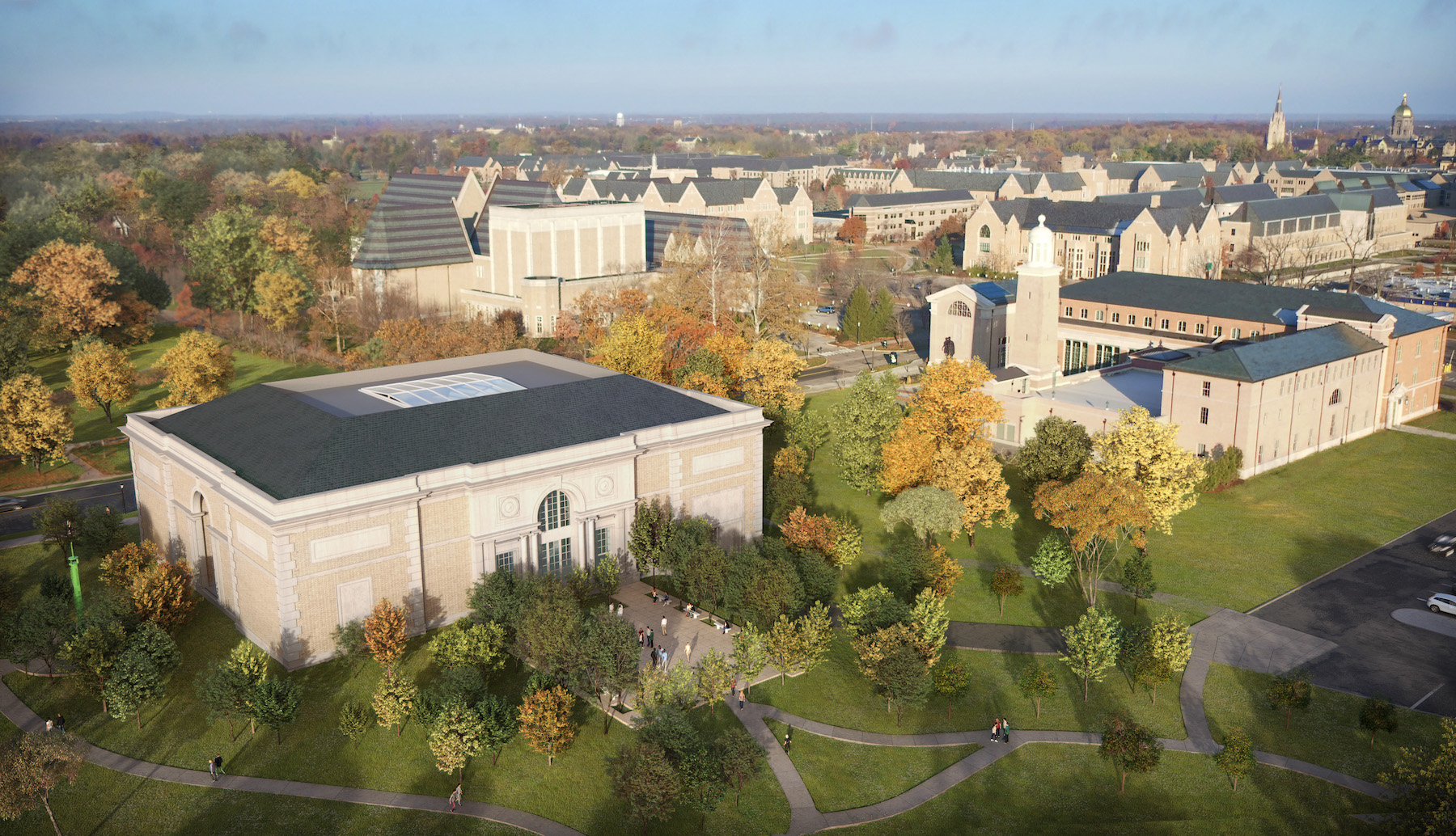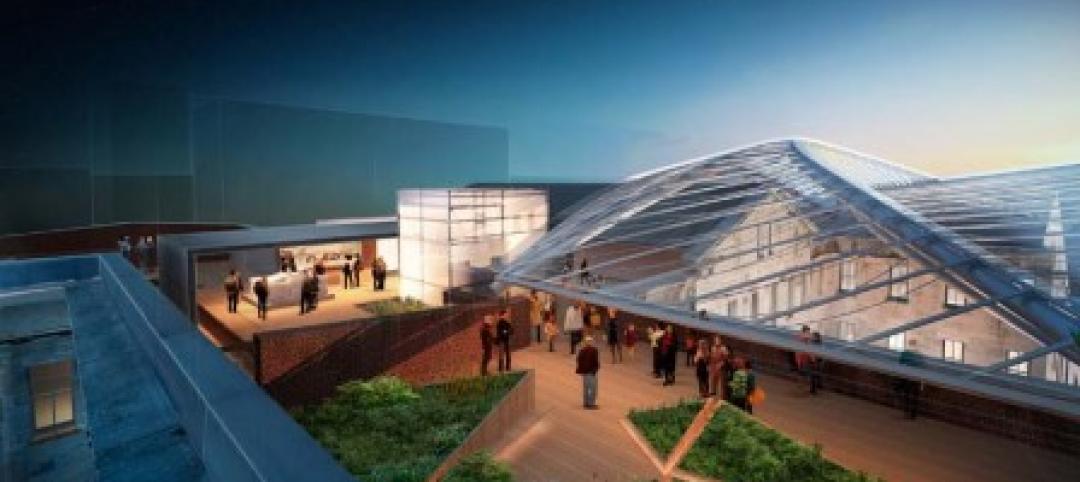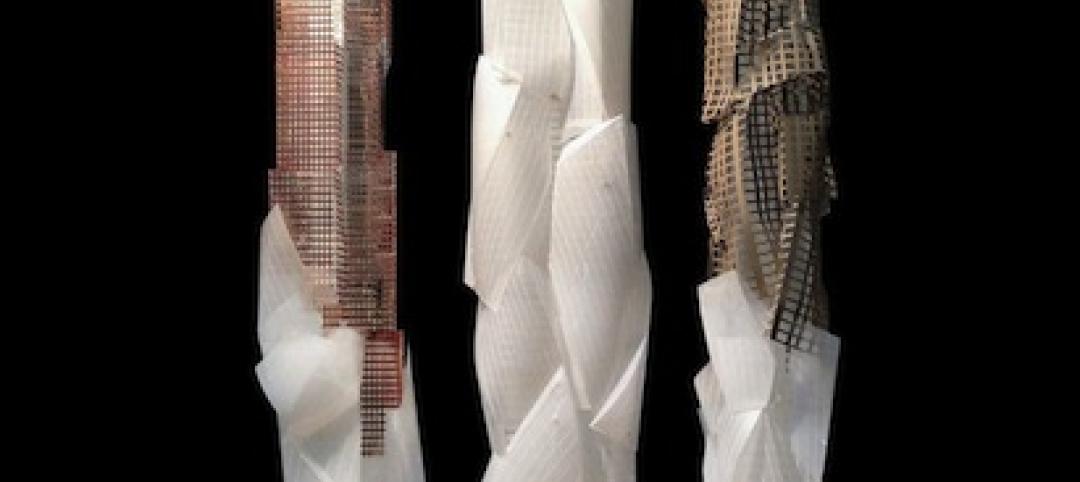Next November, the University of Notre Dame in Indiana is scheduled to open the first phase of Raclin Murphy Museum of Art, a 70,000-sf cultural facility that will eventually replace the campus’ venerable Snite Museum of Art and double the exhibit space available for Notre Dame’s 31,000-item art collection.
The building under construction establishes a new location for the museum, and is considered to be a “front door” to an arts district on the campus’ south side that already includes the DeBartolo Performing Arts Center, the nine-acre Charles B. Hayes Family Sculpture Park, and the Matthew and Joyce Walsh Family Hall of Architecture.
Long-term storage of Notre Dame’s vaunted collection of prints, drawings, and photography, along with most of the museum’s personnel, will remain at Snite until Phase 2 of this complex is realized. Phase 2’s start date and timeline have yet to be disclosed, but what’s known is that it will increase the size of the new museum complex to 132,000 sf, and provide more gallery space, offices, an auditorium, and a works-on-paper study center.
Robert A.M. Stern Architects (RAMSA) is the design architect on this project. The rest of the Building Team includes Bulley & Andrews (GC), the engineering firms Kohler Ronan (MEP), Thornton Tomasetti (SE) and TfL (CE); and Gallagher & Associates (exhibit design). The construction cost has not been disclosed.
Giving exhibits equal weight in the museum
Last week, BD+C interviewed RAMSA’s Melissa DelVecchio, FAIA, Partner; and Anthony McConnell, Senior Associate, about the Raclin museum’s design features within its three floors and a lower level.
DelVecchio noted that new construction was necessitated by the lack of available space near the Snite Museum for expansion. When Snite opened a generation ago, it was on the outer edge of what was then Notre Dame’s campus; now, it’s roughly in the middle of a significantly bigger campus. “It’s hard to find, and there’s no nearby parking,” she said.
Snite only has enough space to exhibit 2-3 percent of the museum’s collection, whereas Raclin will be able to show around 5%. DelVecchio pointed out, as well, that the new building will house a large temporary gallery and loading dock to better attract and handle traveling exhibits, something that Snite was not able to accommodate. The new building also will have more storage space that’s accessible to students for study purposes.
The galleries within Raclin revolve around a central, multi-height atrium that rises to a skylight, and the galleries themselves will have “equal prominence,” said McConnell, compared to some spaces in Snite that relegated the art to “second class” exhibition.
The lower level of Raclin “has no back,” he explained, in that its gallery for International Modern and Contemporary Art blends into the museum’s sculpture court. Raclin is also distinguished on its west side by an oval-shaped working chapel, Our Lady, Queen of Families, that will display some art and be near galleries with ecclesiastic art on display.
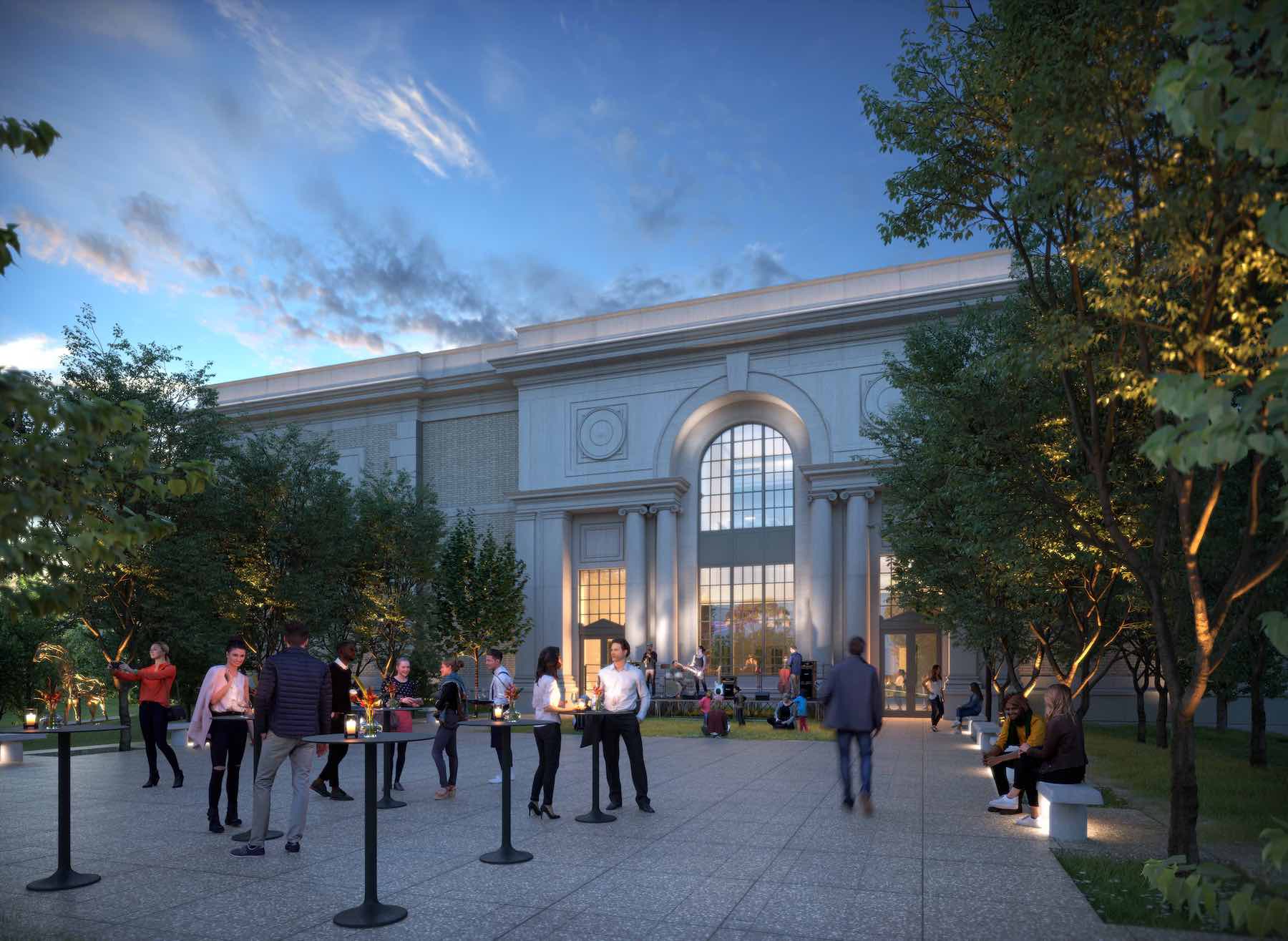
From an operational standpoint, the museum is designed to present zero thresholds for patrons with disabilities. That includes the installation of automated door openers for the facility’s restrooms.
The exterior design of this rectangular building is classical, and its materials will match the rest of the arts district and streetscape, said DelVelcchio.
Related Stories
| Jul 29, 2013
2013 Giants 300 Report
The editors of Building Design+Construction magazine present the findings of the annual Giants 300 Report, which ranks the leading firms in the AEC industry.
| Jul 26, 2013
How biomimicry inspired the design of the San Francisco Museum at the Mint
When the city was founded in the 19th century, the San Francisco Bay’s edge and marshland area were just a few hundred feet from where the historic Old Mint building sits today. HOK's design team suggested a design idea that incorporates lessons from the local biome while creating new ways to collect and store water.
| Jul 22, 2013
Cultural Facility Report [2013 Giants 300 Report]
Building Design+Construction's rankings of design and construction firms with the most revenue from cultural facility projects, as reported in the 2013 Giants 300 Report.
| Jul 19, 2013
Reconstruction Sector Engineering Firms [2013 Giants 300 Report]
URS, STV, Wiss Janney Elstner top Building Design+Construction's 2013 ranking of the largest reconstruction engineering and engineering/architecture firms in the U.S.
| Jul 19, 2013
Reconstruction Sector Architecture Firms [2013 Giants 300 Report]
Stantec, HOK, HDR top Building Design+Construction's 2013 ranking of the largest reconstruction architecture and architecture/engineering firms in the U.S.
| Jul 19, 2013
Renovation, adaptive reuse stay strong, providing fertile ground for growth [2013 Giants 300 Report]
Increasingly, owners recognize that existing buildings represent a considerable resource in embodied energy, which can often be leveraged for lower front-end costs and a faster turnaround than new construction.
| Jul 2, 2013
LEED v4 gets green light, will launch this fall
The U.S. Green Building Council membership has voted to adopt LEED v4, the next update to the world’s premier green building rating system.
| Jul 1, 2013
Report: Global construction market to reach $15 trillion by 2025
A new report released today forecasts the volume of construction output will grow by more than 70% to $15 trillion worldwide by 2025.
| Jun 28, 2013
Building owners cite BIM/VDC as 'most exciting trend' in facilities management, says Mortenson report
A recent survey of more than 60 building owners and facility management professionals by Mortenson Construction shows that BIM/VDC is top of mind among owner professionals.
| Jun 25, 2013
Mirvish, Gehry revise plans for triad of Toronto towers
A trio of mixed-use towers planned for an urban redevelopment project in Toronto has been redesigned by planners David Mirvish and Frank Gehry. The plan was announced last October but has recently been substantially revised.


